Christmas in Charleston: Celebrating the Holiday History in the Holy City

Charleston has over 200 years of holiday history. Christmas traditions like garlands, oyster roasts, and city-wide cheer started long ago in the lowcountry. Much of Charleston’s history is on display at Christmas, both on plantations and in historic homes. Discover what Christmas in Charleston was like from the 1700s to the present.
History of Christmas in Charleston
Historic Churches
Churches are an important part of the Holy City, and indeed, a crucial part of the Christmas season in Charleston. There are a few Holy City churches with long histories here including:
Bethel United Methodist Church started in 1852 and was the only Methodist church in the Holy City that stayed open during the Civil War.
The Cathedral of St. John the Baptist was built on the original foundation of the church that was destroyed in 1854. Construction started on this church in 1890.
Central Baptist Church was built in 1891 and is thought to be one of the first churches designed, built, and founded by Charleston African American residents.
Pre-Civil War History of Christmas in Charleston
Charleston was incorporated in 1783. The social calendar of the southern colonies revolved around Christmas, but traditions like St. Nicholas, Santa Claus, or Christmas trees had not yet reached the South.
Christmas in the 1800s had the same feeling of holiday spirit as we see during the holiday today. There would be gift-giving and plenty of holiday feasts. Colonial Christmas traditions included wine, brandy, and rum punches for those who could afford such libations. Foods for the holiday included beef, goose, or ham.
Homes were decorated with mistletoe, garlands, and holly. Locals would exchange “Merry Christmas” with one another upon meeting. Because religion played an important role in the lives of 18th-century Charlestonians, the holiday would run on the Anglican calendar. This meant that December 25th was the first day of the Christmas holiday, which then ran out the full 12 days of Christmas until January 6. January 6, or the “Twelfth Night” would often be a time of balls and parties around the colonial regions.
There are records of enslaved people holding Christmas parties and some even received time off for the holiday. There are many accounts of holiday drinking and eating on plantations.
The Manigault House is one place to relive Christmas history. Built in 1803, this historic home is decorated for the holidays each year. The Heyward-Washington House was built in 1772 and also offers a glimpse into the history of Charleston. Stop at Middleton Place for more history and to tour the gardens and house of this grand plantation.
Boone Hall Plantation hosts Christmas every year, and the mansion and grounds are decorated for the season. If you’re looking for Charleston Christmas lights, this is the perfect place to start.
The plantation was founded in 1681 and is one of America’s oldest working farms. Come here for a taste of Charleston history, with holiday highlights until December 31.
Before the start of the Civil War, Charleston was known for its wealth and abundance. Christmas in 1860 had houses filled with greenery, bustling markets, and shops full of Christmas revelers. Children could expect toys and presents.
Civil War Christmas History
In 1863, Charleston was at the height of the Civil War. Christmas during that time was filled with doubt and dread. An editorial from the time said that most families would not exchange gifts and the sounds of battle were all around.
Christmas in the South was focused on soldiers fighting in the war, with a Christmas dinner at the Soldiers’ Wayside Home and the Soldier’s Relief Association collecting blankets and gloves. Christmas raffles were held at the Tivoli Gardens.
After the end of the war, residents began new Christmas traditions like caroling and decorating trees. There were only one or two toy shops in Charleston in the late 19th century, so many toys were homemade.
1900 and Beyond
In the early 20th century, many Christmas trees would have been topped with candles (yikes!). String lights were still expensive in those early days and didn’t start gaining popularity until 1903. Stockings were hung by the fire. And wooden toys were popular gifts for children.
Oyster roasts have long been a popular part of Charleston’s holiday history. A winter tradition in the Holy City, oyster roasts first began in the 1820s. Now every holiday season, Charleston is filled with oyster roasts, hosted by professionals and restaurants or at local Charlestonians’ homes.
During the 1950s, Joint Base Charleston played an important part in holiday traditions. President Eisenhower evacuated Hungarian civilians in December of 1956. Due to bad weather, 279 Hungarians were diverted to Charleston just before Christmas that year. The base hosted a holiday gala and celebration for the visitors.
Each year, Charleston School Ashley Hall hosts The Christmas Play and has been telling the story of the nativity with students featured in the play for almost 100 years. Alumna Barbara Bush ‘43 even participated in the merry tradition.
Many locals still remember the Christmas Snowstorm of 1989. It was the largest snowstorm in history in the Southeast United States. Blanketing Charleston with 8 inches of snow, it was the highest recorded snowfall in the city. Charleston had a true, white Christmas that year.
Traditions with Charleston Roots
The poinsettia, known as the flower of the Christmas season, was first brought to the United States by a Charleston native. Joel Robert Poinsett was on a trip to Mexico in 1925 and found the flower. He brought it home to the Holy City and used it as holiday decorations. Now, poinsettias can be seen throughout the city during the holiday.
St. Cecelia’s punch was commonly served at Charleston holiday balls. The recipe was first published in the 1950s in Charleston Receipts, the Junior League book. Other holiday dishes published in Charleston recipes include ‘Meeting Street Crab Meat,’ ‘Likker Pudding,’ ‘Hopping John’ and ‘Peppermint Stick Ice Cream.’
